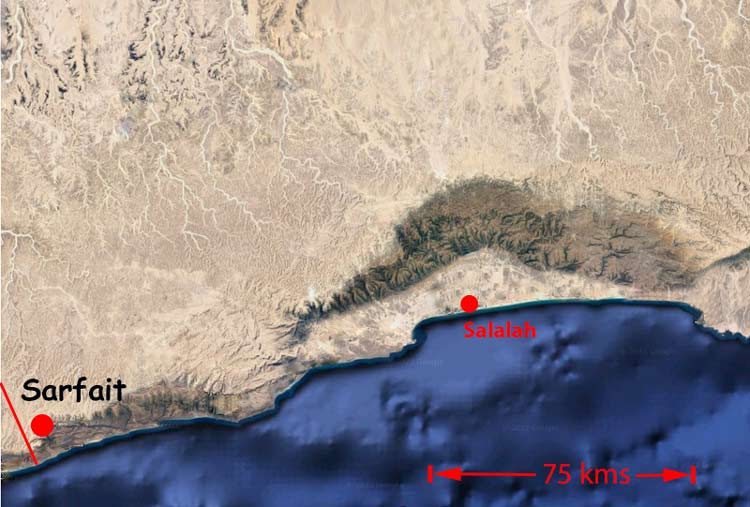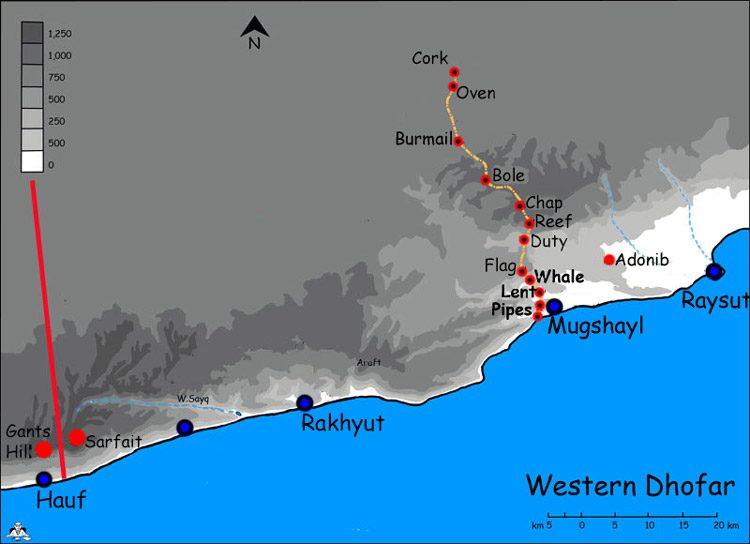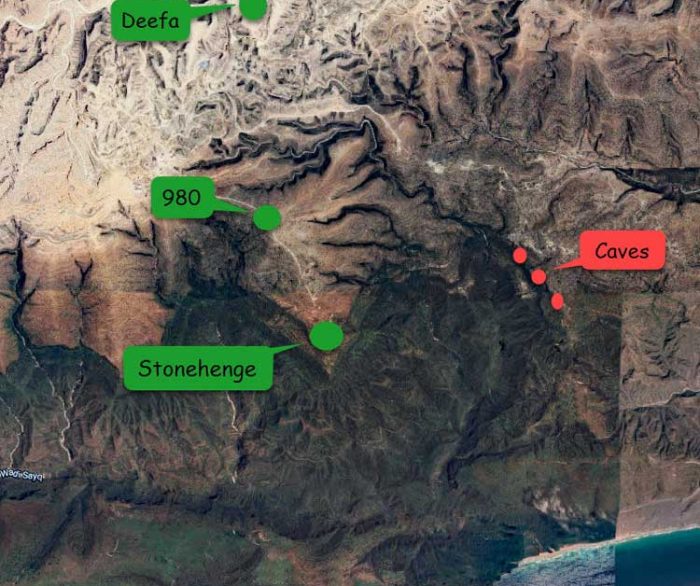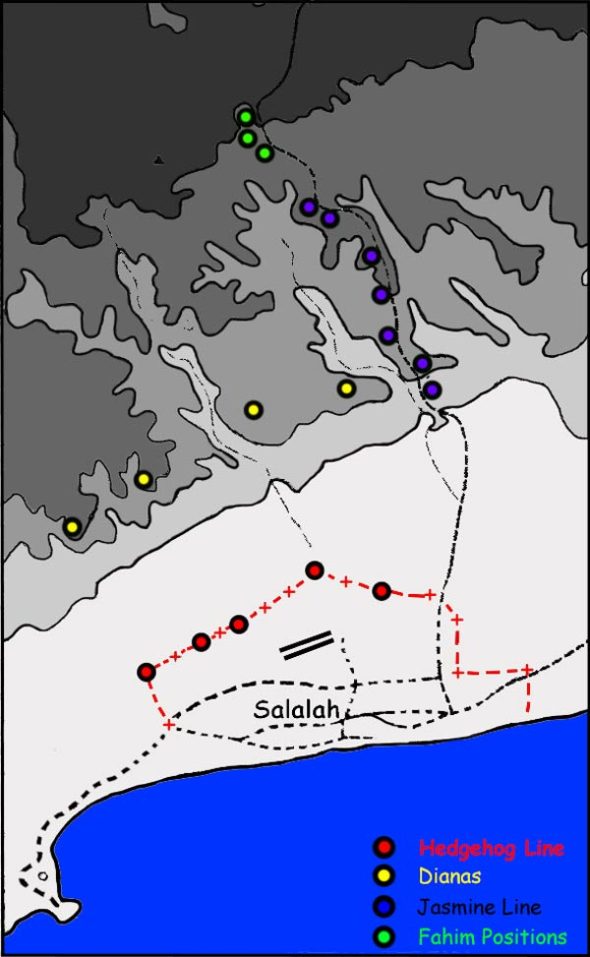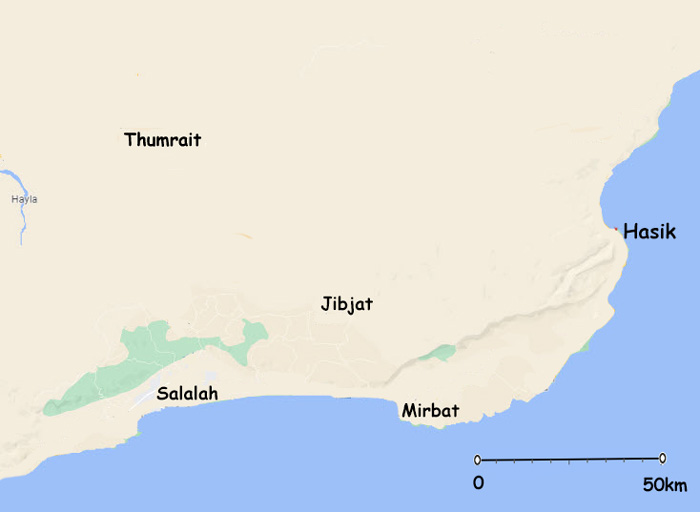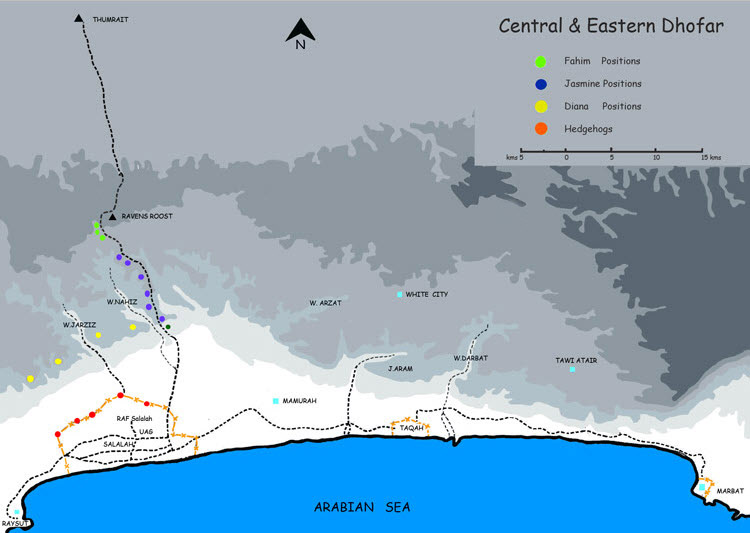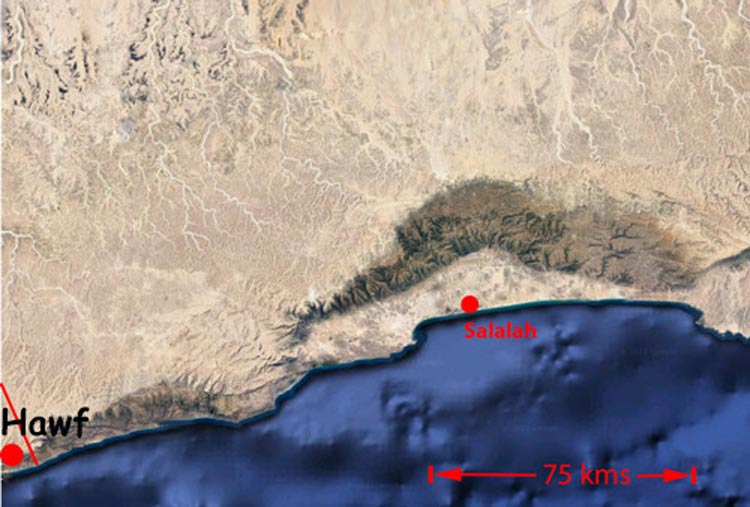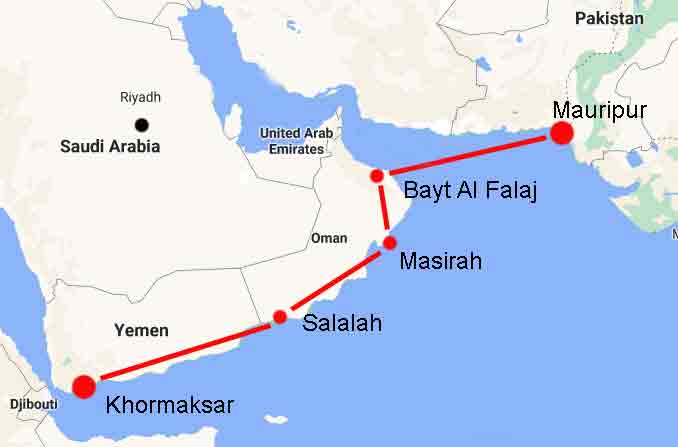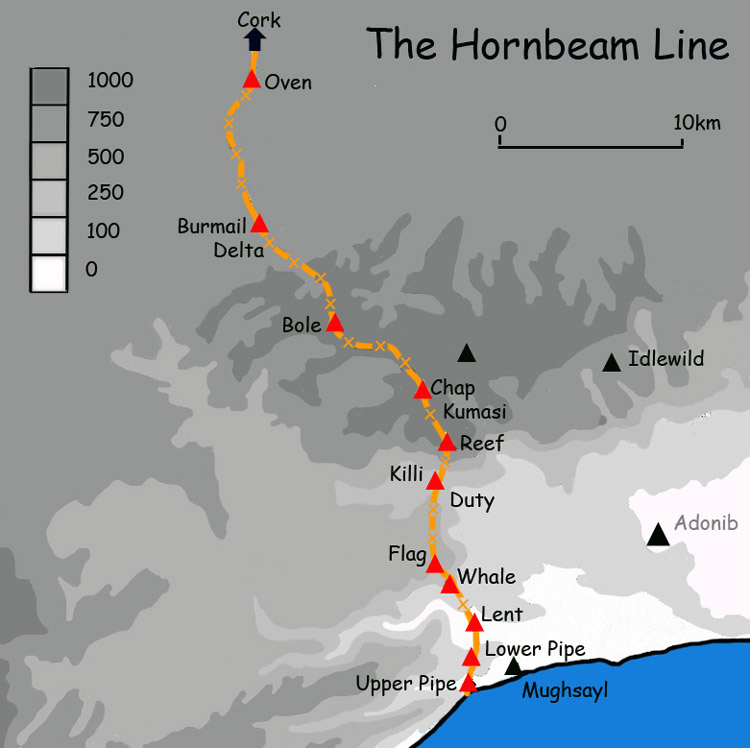
The concept of the Hornbeam line seems to have been dreamt up by Simon Hill, a Norther Frontier Regiment Company Commander. His idea was that if several strong static positions were put inplace between the coast and the negdh and patrols were sent out from them fewer dissidents would get through; their camel trains certainly would not but the odd man carrying ammunition might.
He sold this idea to his commanding officer, Lt-Col Bryan Ray, who in turn sold it to Jack Fletcher the Dhofar Brigade commander. (“Dangerous Frontiers” by Bryan Ray p 122)
The next logical move was to make the line “dissident proof” by constructing a physical concertina wire barrier three coils high and 53 kms long. It had to cross wadis such as the Jizalaut which was 2000ft deep.
It consumed 15,000 coils of wire 12,000 pickets and 4,000 mines. These were sourced from Europe, India and Pakistan.
John Blashford-Snell in his book “A Taste for Adventure” goes into some quite considerable detail of the use of various types of mine by the R.E. including the ‘jumping jack’ mines. He also mentions the use of booby traps and electrically detonated mines.
Much of the work was done by Two Troop 48 Squadron Royal Engineers who had a huge logistic support from an RAF flight of Wessex helicopters, AB-205s of both SOAF and the Iranians and some fixed wing Skyvans .
